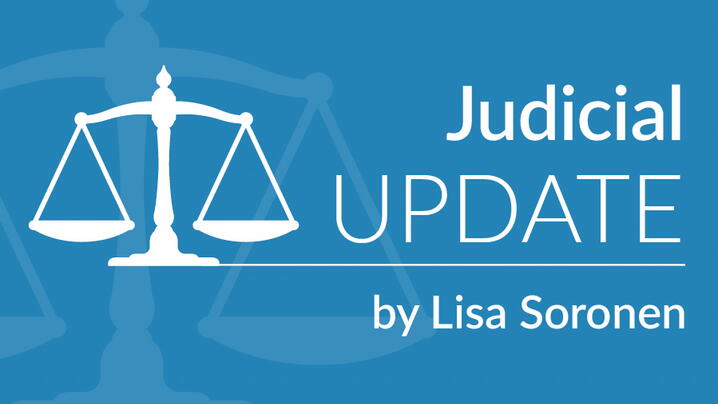
by Lisa Soronen, executive director, State and Local Legal Center
Per the Endangered Species Act (ESA), the U.S. Fish and Wildlife Service (FWS) can designate land a “critical habitat” for an endangered species. ESA mandates that FWS consider the economic impact of specifying an area as a critical habitat. FWS can exclude an area if the benefits of excluding it outweigh the benefits of including it.
In its amicus brief in Weyerhaeuser Company v. U.S. Fish and Wildlife Service, the State and Local Legal Center (SLLC) argues that courts can review FWS decisions not to exclude an area from a critical habitat because of the economic impact of the designation.
FWS designated land in Louisiana owned by the Weyerhaeuser Company a critical habitat for the dusky gopher frog. The Weyerhaeuser Company holds a timber lease on all of the lands through 2043.
Only about 100 adult dusky gopher frogs are known to exist in the wild. Historically, the frog was found in parts of Louisiana, Mississippi, and Alabama. Today, the frog exists only in Mississippi.
FWS concluded the economic impacts on the land “are not disproportionate.” The Weyerhaeuser Company claims the potential loss of development value in the land is up to $33.9 million over 20 years. It also claims that because the land isn’t currently habitable by the dusky gopher frog, it provides no benefit.
The Fifth Circuit agreed with FWS that once it has fulfilled its statutory obligation to consider the economic impact, a decision not to exclude an area is discretionary and not reviewable in court. “[I]f no judicially manageable standards are available for judging how and when an agency should exercise its discretion, then it is impossible to evaluate agency action for ‘abuse of discretion.’”
The SLLC amicus brief argues there are standards for reviewing a decision not to exclude land from a critical habitat because the statute provides a standard for determining when to exclude land (if “the benefits of exclusion outweigh the benefits of designation”). As a practical matter, the brief points out that without judicial review FWS has no incentive to listen to the expertise of state and local government officials “who are experts in the land-use issues that exclusion decisions most affect.”
To designate unoccupied areas a critical habitat, FWS must determine that they are “essential for the conservation of the species.” The Weyerhaeuser Company sued the Fish and Wildlife Service claiming that the land in question does not meet the definition of critical habitat because it is currently “uninhabitable” by the frog “barring a radical change in the land’s use by its private owners.” The Fifth Circuit ruled in favor of FWS, concluding the definition of critical habitat includes no habitability requirement and no requirement the frog can live on the land in the foreseeable future.
The SLLC amicus brief takes no position on whether the Fifth Circuit’s interpretation of critical habitat is correct, only that FWS economic analysis may be reviewed by a court.
Bryan K. Weir, Thomas R. McCarthy, and J. Michael Connolly of Consovoy McCarthy Park, and the Antonin Scalia Law School Supreme Court Clinic, wrote the SLLC amicus brief, which was joined by National Conference of State Legislatures, Council of State Governments, National Association of Counties, National League of Cities, United States Conference of Mayors, International City/County Management Association, and International Municipal Lawyers Association.
Related Content
Comprehensive Sustainability: The Economic, Social, and Environmental Impacts. This page includes educational resources for ICMA that gives a complete look at stainability from several different angles.
Becoming Environmentally Resilient. This article from 2014 gives some practical advice on how to make a community more environmentally resilient.
State and Local Legal Center. This link takes you to SLLC's website, where the latest on all the cases that SLLC is tracking can be found as well as other amicus briefs that the center has filed with ICMA and other state and local government organizations.
New, Reduced Membership Dues
A new, reduced dues rate is available for CAOs/ACAOs, along with additional discounts for those in smaller communities, has been implemented. Learn more and be sure to join or renew today!
